Remote Utah outpost serves as stand-in for surface of Mars
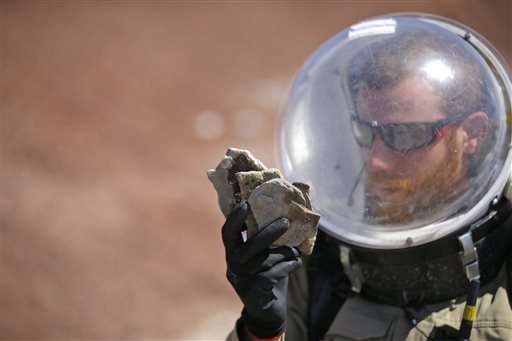
Four people wearing space helmets and square backpacks emerge from a circular structure resembling a water tank and step onto a reddish, barren landscape.
One hikes up a hill to take magnetic readings of the ground with a rectangular apparatus that looks like a large leveling tool. Another pushes a wheelbarrow equipped with sensors arrayed in a zig-zag pattern.
For a group of six Belgian college students, it's just another simulated day on Mars.
This rocky corner of Utah bears such a resemblance to the red planet that it's become a hot spot for scientists and engineers to run imaginary missions to Earth's neighbor. They've been coming here for more than a decade, hoping their research someday helps put humans on the Martian surface.
This site and others that allow crews to mimic interplanetary missions are helping to raise buzz about Mars to an all-time high as advancements in science and engineering convince space enthusiasts that the 140-million-mile trip is a realistic possibility in this century.
The research center is run by the nonprofit Mars Society, an advocacy group that believes getting people to Mars to be the great challenge of our time. The group is not affiliated with NASA or the federal government.
"What we are doing on Mars is beginning humanity's career as a space-faring species, a multi-planet species," said Robert Zubrin, Mars Society director. "This is about extending the human reach from one world to many worlds."
On May 5, the third annual Humans to Mars Summit kicks off in Washington D.C., with about 800 attendees expected and as many as a quarter million more watching webcasts, said Chris Carberry, executive director of the organization that puts on the summit, Explore Mars Inc.
"There's never been so much support for sending humans to Mars," said Carberry, who remembers congressional staffers rolling their eyes when he pitched the idea in the late 1990s while working for the Mars Society.
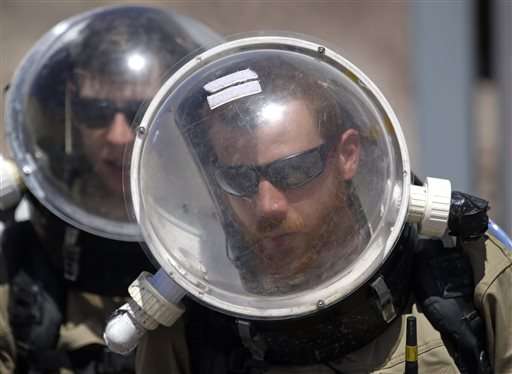
NASA administrator Charles Bolden said recently in a congressional hearing that the space agency's plan is to get people to Mars in the 2030s.
Private companies are trying to beat NASA by getting people there first. Billionaire entrepreneur Elon Musk's company, SpaceX, plans to unveil concepts for Mars colonization later this year. Richard Branson's company, Virgin Galactic, has also discussed a trip to Mars.
The Belgian students are the 153rd group in the last 14 years to travel to this outpost for a two-week mission.
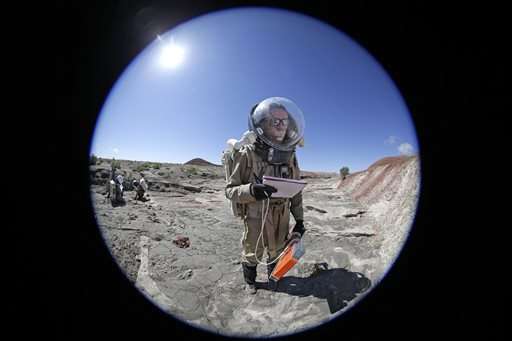
None of the six are interested in going to Mars without a guarantee of a safe return.
"I could die for science, but at 70 years old and not at 30," said Romain Compere, now 23. "I don't want to die without oxygen and thousands of kilometers from my home with no one to love me."
Compere and his five classmates beat out 34 other students at their university to be chosen for the crew. The Mars Society charged each of them $1,000 for the mission, which the students paid by getting a grant from NASA and donations from their university and several Belgian science companies, said Bastien Mathurin, the commander.
Like other groups, each person fills a role that the Mars Society believes will be integral to a real mission. There is a commander, sub-commander, astronomer, geologist, biologist, journalist and engineer/mechanic.
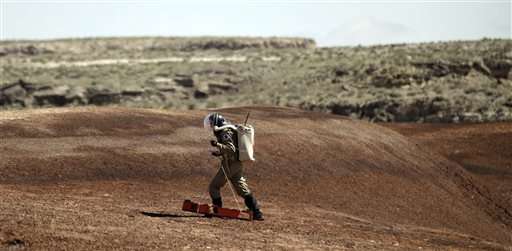
The teams hold close to the most important rule of the mission: Simulate everything as authentically as possible. They never go outside without space helmets. When entering and leaving, they wait several minutes in a fake decompression room between the outside door and inside of the habitat. At least one person must always stay behind in case something goes wrong, and they never go outside alone. They cook with freeze-dried foods or other dry goods.
The place where they live and sleep is called "the habitat." From the outside, it looks like a giant water tank. Inside, it has two levels, with six narrow bedrooms upstairs and a bathroom, shower and work station downstairs. It's basic, but for two weeks everybody gets along fine, Mathurin said. They planted the Belgian flag in the ground outside.
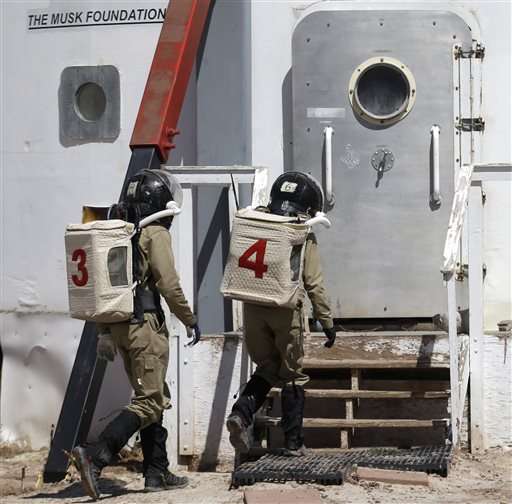
"We're trying to write the book of field tactics for Mars explorers," Zubrin said. "We do not expect that the people in our crews will be the actual people that go to Mars ... We're trying to discover how the Mars mission crew should be trained."
The training helps illustrate the logistical and emotional issues that a Mars mission would confront, he said.
The Colorado-based Mars Society first built an Arctic training station in 2000 on Devon Island in the Canadian territory of Nunavut but soon realized it was logistically cumbersome to get crews there.
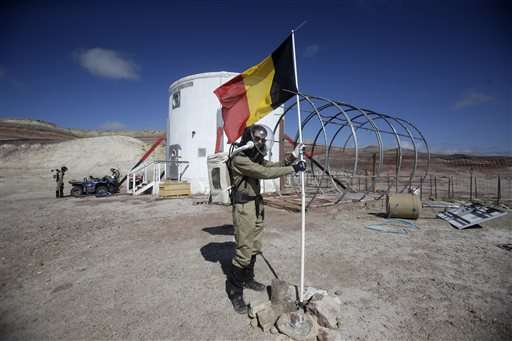
That triggered a search for a desert site in the American Southwest. The site in Utah was chosen because it looks like Mars and was reasonably close to airports. Located just outside the tiny community of Hanksville, the site is a four-hour drive from Salt Lake City or 2.5 hours from Grand Junction, Colorado.
Since 2001, the Mars Society has spent about $1 million on the desert research center to build the habitat, rent the land and pay for supplies and upkeep, Zubrin said. The group has been helped by a $150,000 in contributions from NASA. The organization also relies on donations and dues from its 7,000 members worldwide.
More than 900 people have participated in missions in Utah, coming from all over the world, including Russia, Romania, Australia and Japan. One in 5 work for NASA, Zubrin said.
The Utah training site isn't the only place to simulate Mars missions.
Last summer, a crew of six scientists spent four months atop a volcano in Hawaii. Several years ago, six foreign researchers spent 520 days in a locked steel capsule in Moscow during a mock flight to Mars.

These training sites offer useful practice, but mainly promote education and public awareness, said Greg Williams, deputy associate administrator for policy in the Human Exploration and Operations Mission Directorate at NASA.
"That's been really important, just to keep the buzz going about it," Williams said. "To highlight not only the challenges of getting on Mars and being on Mars but also what we are accomplishing in order to make that happen."
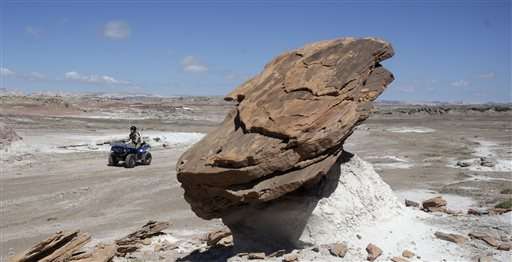
Mars researchers suspend reality when working in Utah desert
The Mars Society chose the American Southwest for its training facility because the soil and lack of vegetation resemble the landscape of the red planet, but that's where the similarities end.
Most of the simulations in Utah require participants to imagine the conditions of Mars, suspending the reality around them. A look at some of the main differences between Mars and the Earth:
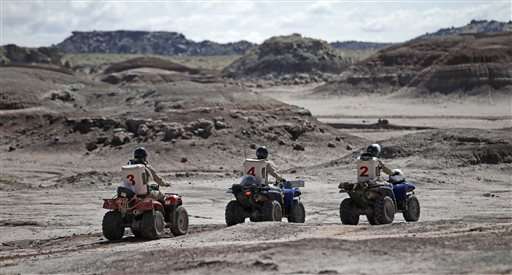
___
DANGEROUS RADIATION
Astronauts venturing into deep space on their way to Mars would face radiation from high-energy galactic cosmic rays spewed by distant supernova explosions and sporadic bursts of charged particles hurled by the sun. Earth's magnetic field helps to deflect much of that radiation. Astronauts would be bombarded with as much radiation as getting a full-body CT scan about once a week for a year, according to researchers who reviewed data from a radiation sensor aboard a rover during the journey to Mars. In some cases, that dose would exceed NASA's standards and be enough to raise an astronaut's cancer risk by 3 percent.
___
NO RUNNING WATER
There is no liquid water on the current surface of Mars, though scientists believe that the planet had running water long ago. That belief comes from the fact that Mars has river beds and canyons that were probably formed by water. Mars does have frozen water on its polar cap, which is a mixture of carbon dioxide ice and water ice.
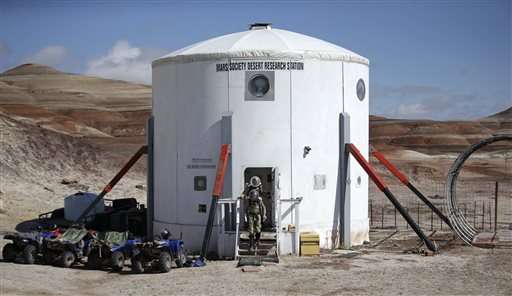
___
NO OXYGEN
On earth, 21 percent of the atmosphere is oxygen and less than 1 percent carbon dioxide. But on Mars, 96 percent of the atmosphere is carbon dioxide and less than 1 percent is oxygen. That means astronauts must wear spacesuits at all times.
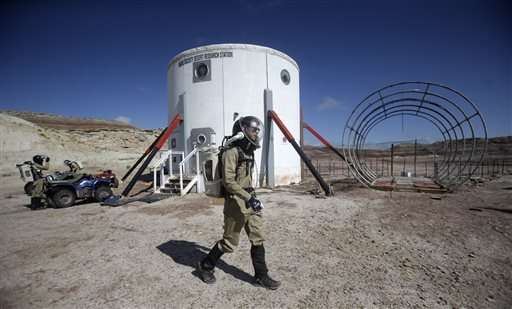
___
FREEZING TEMPERATURE
The Earth has some cold places, but they pale in comparison to freezing Mars. The average temperature on Mars is minus 81 degrees, with lows reaching minus 284. Earth's average temperature is 57 degrees, with the coldest temperature ever on record being minus 126.
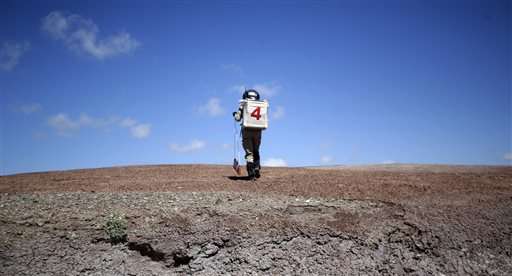
___
GRAVITY
Mars has 63 percent less gravity. A person who weighs 100 pounds on earth would weigh only 38 pounds on Mars.
-
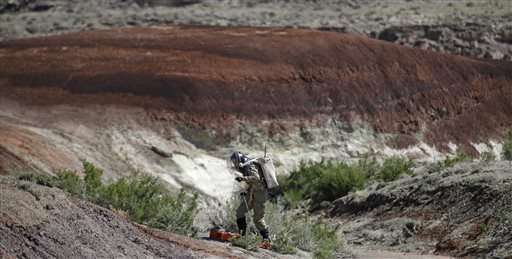
In this photo taken on Saturday, April 18, 2015, Auriane Canesse, crew geologist and health and safety officer, of Crew 153, takes magnetic readings of the ground using a large rectangular apparatus near the Mars Desert Research Station, in Hanksville, Utah. This isn't Mars, but it's resemblance to the red planet has made it a hot spot for teams of geologists, biologists and engineers from around the world who have been coming for more than a decade to simulate missions to the mysterious planet in hopes of providing critical research to for future trips to Mars. (AP Photo/Rick Bowmer) -
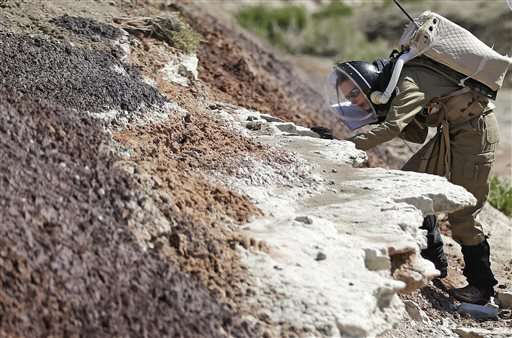
In this photo taken on Saturday, April 18, 2015, Auriane Canesse, crew geologist and health and safety officer, of Crew 153, studies a rock formation near the Mars Desert Research Station, in Hanksville, Utah. This isn't Mars, but it's resemblance to the red planet has made it a hot spot for teams of geologists, biologists and engineers from around the world who have been coming for more than a decade to simulate missions to the mysterious planet in hopes of providing critical research to for future trips to Mars. (AP Photo/Rick Bowmer) -
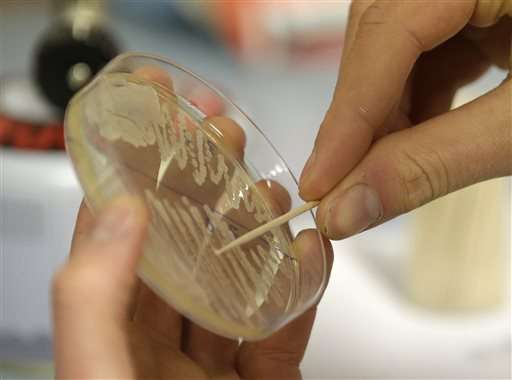
In this photo taken on Saturday, April 18, 2015, Florian Commans, crew biologist, of Crew 153, studies bacteria from a soil sample at the Mars Desert Research Station, in Hanksville, Utah. This isn't Mars, but it's resemblance to the red planet has made it a hot spot for teams of geologists, biologists and engineers from around the world who have been coming for more than a decade to simulate missions to the mysterious planet in hopes of providing critical research to for future trips to Mars. (AP Photo/Rick Bowmer) -
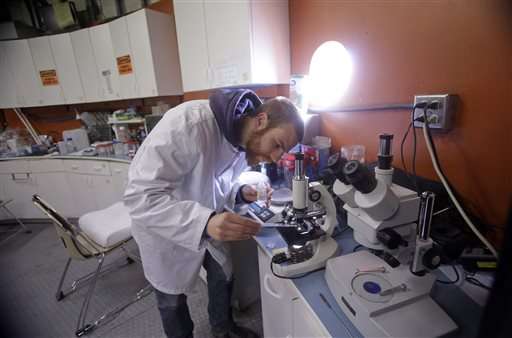
In this photo taken on Saturday, April 18, 2015, Florian Commans, crew biologist, of Crew 153, studies bacteria from a soil sample at the Mars Desert Research Station, in Hanksville, Utah. This isn't Mars, but it's resemblance to the red planet has made it a hot spot for teams of geologists, biologists and engineers from around the world who have been coming for more than a decade to simulate missions to the mysterious planet in hopes of providing critical research to for future trips to Mars. (AP Photo/Rick Bowmer)
© 2015 The Associated Press. All rights reserved.





















